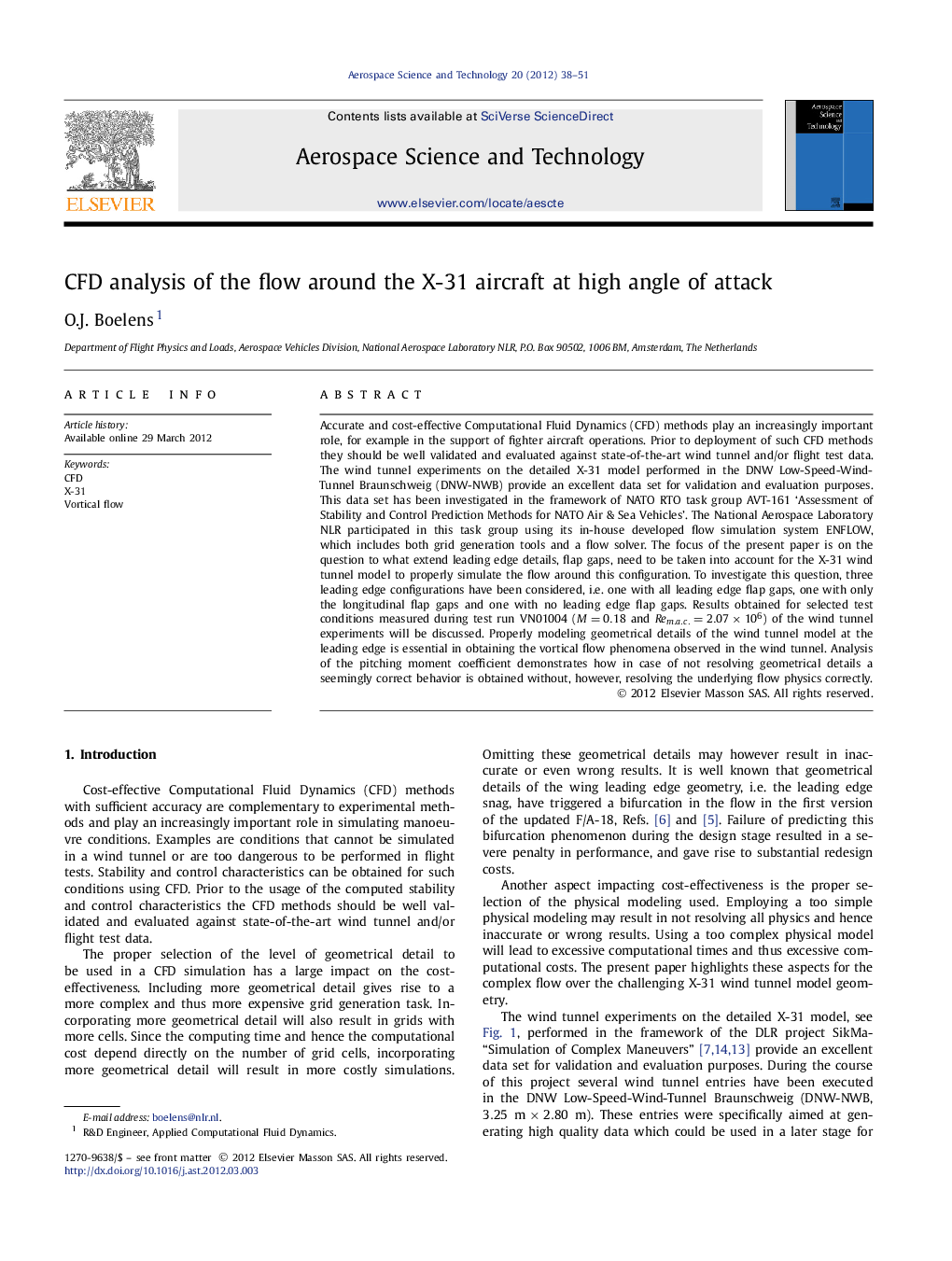| Article ID | Journal | Published Year | Pages | File Type |
|---|---|---|---|---|
| 1718432 | Aerospace Science and Technology | 2012 | 14 Pages |
Accurate and cost-effective Computational Fluid Dynamics (CFD) methods play an increasingly important role, for example in the support of fighter aircraft operations. Prior to deployment of such CFD methods they should be well validated and evaluated against state-of-the-art wind tunnel and/or flight test data. The wind tunnel experiments on the detailed X-31 model performed in the DNW Low-Speed-Wind-Tunnel Braunschweig (DNW-NWB) provide an excellent data set for validation and evaluation purposes. This data set has been investigated in the framework of NATO RTO task group AVT-161 ‘Assessment of Stability and Control Prediction Methods for NATO Air & Sea Vehicles’. The National Aerospace Laboratory NLR participated in this task group using its in-house developed flow simulation system ENFLOW, which includes both grid generation tools and a flow solver. The focus of the present paper is on the question to what extend leading edge details, flap gaps, need to be taken into account for the X-31 wind tunnel model to properly simulate the flow around this configuration. To investigate this question, three leading edge configurations have been considered, i.e. one with all leading edge flap gaps, one with only the longitudinal flap gaps and one with no leading edge flap gaps. Results obtained for selected test conditions measured during test run VN01004 (M=0.18M=0.18 and Rem.a.c.=2.07×106Rem.a.c.=2.07×106) of the wind tunnel experiments will be discussed. Properly modeling geometrical details of the wind tunnel model at the leading edge is essential in obtaining the vortical flow phenomena observed in the wind tunnel. Analysis of the pitching moment coefficient demonstrates how in case of not resolving geometrical details a seemingly correct behavior is obtained without, however, resolving the underlying flow physics correctly.
